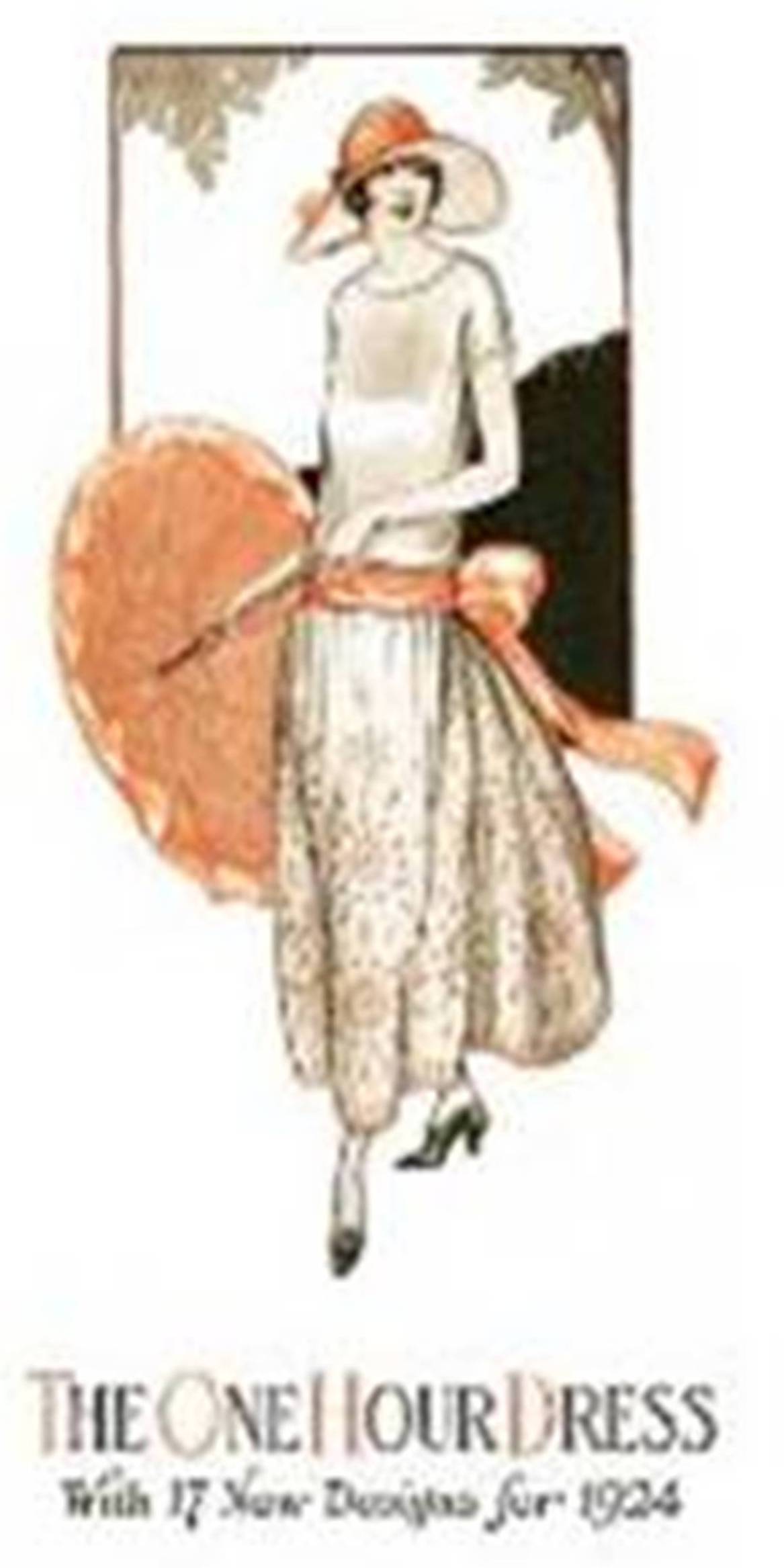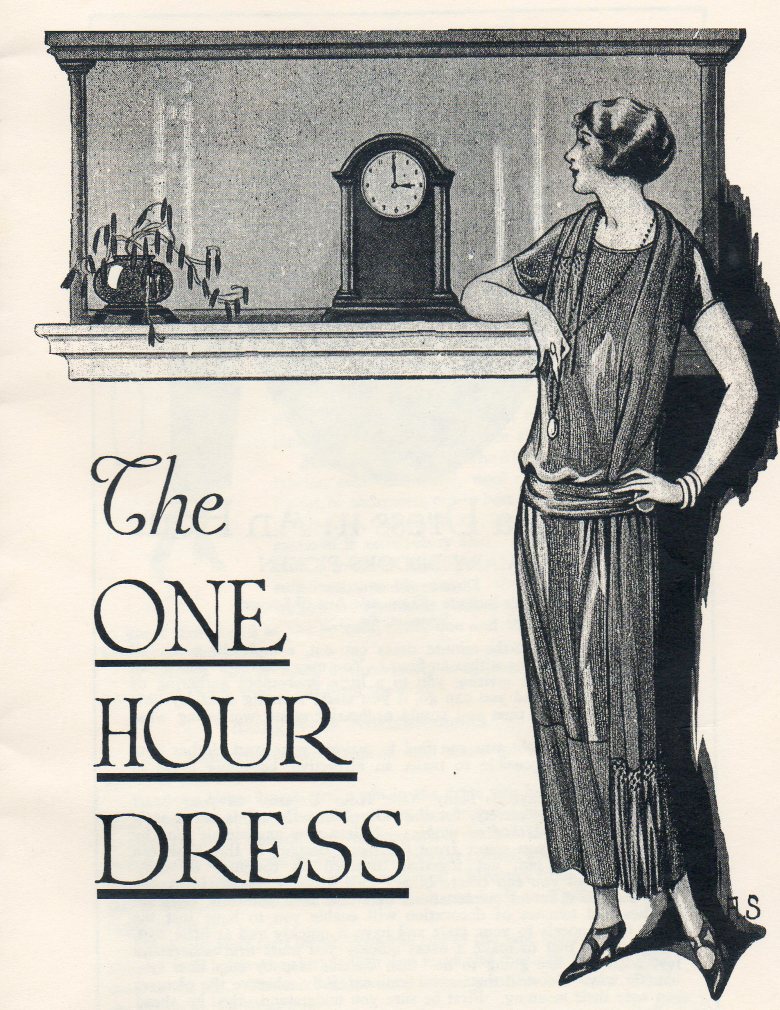|
Interesting Costume-Related
Workshops & Classes 2009 |
||
|
(Click HERE to see photos of past workshops!) |
||
|
In response to several requests to hold
workshops for members of Somewhere in Time, Unlimited and guests,
Lady Victoria is in the process of lining up instructors for such
things as: How to Start Costuming, Hat Decorating, Hat Construction
101, Recovering Your Parasol, Hatbox Construction & Decorating, etc. If you are interested in any of these or have ideas of your own, Lady Victoria would love to hear from you! |
||
|
"The One-Hour Dress"
Lady Victoria (aka Rita Harris) is planning a series of workshops to help people new to SITU acquire some very functional outfits. To this end, she has picked some rather simple but still historically accurate sewing patterns for the workshops. These workshops are planned for those with no prior sewing experience as well as those with sewing experience. Lady Victoria and Miss Bobbie Kalben will be holding the second in this series of workshops, a workshop to make a 1920’s dress, called the One Hour Dress. You will leave the workshop with a (hopefully) almost completed 1920’s dress. This dress will be perfect to wear at the Great Gatsby and Friends event (August 16). This workshop is for anyone – in fact, you don’t even need to know how to sew to attend and go home with your dress! The workshop will be: Date: Sunday, June 7 Time: 12 noon until you finish, get tired or 4:45 PM (whichever comes first!)
Place: Seattle
Public Library, Southwest Branch Cost: Free! Pre-registration: See below What to Bring: See below WHAT IS THE ONE HOUR DRESS? The One Hour Dress was developed by Mary Brooks Picken of the Woman’s Institute in 1923. It is not a style of dress, it is a method of making a dress. Because it was developed in the 1920’s, it is a method of making an authentic 1920’s dress. The One Hour Dress method has been published in booklet form – Lady Victoria and Miss Bobbie have seen two different booklets, both copyrighted 1924, both a bit different from each other. The covers of these two booklets are shown above. WILL I REALLY BE ABLE TO MAKE THIS DRESS IN ONE HOUR? Probably not. An experienced seamstress who has made this dress a few times before, and who starts with preshrunk and ironed fabric, probably could cut and sew the dress in one hour. Partly what makes the dress so fast to make is that the sleeves are made as one with the blouse, and, in one version of the dress, the hem of the skirt is the selvage edge of the fabric, so no hemming is required. HOW DO I OBTAIN A ONE HOUR DRESS BOOKLET? Miss Bobbie bought her booklet, the one on the left above, let’s call it the “parasol booklet”, from http://emailedvintagepatterns.com/ONEhourDRESSpage.html This “parasol booklet” is a copyrighted restored and revised version that cost $4.99 for a downloadable pdf. As the booklet is copywrited, we suggest you can go to that website and order your own copy. It includes instructions for 17 variations of the basic dress. Please note that the basic instructions are NOT for the pink dress on the cover – the pink dress on the cover is one of the 17 variations. Lady Victoria’s booklet, the one on the right above, let’s call it the “clock booklet”, as far as we know, is not copyrighted. You can contact Lady Victoria directly to see if you can get a copy of her clock booklet from her. This booklet includes 17 variations also, and these 17 are all different than in the parasol booklet. Using your favorite search engine on “One Hour Dress”, you will find that there are other websites selling a One Hour Dress booklet. Because we have not seen these booklets, we can’t comment on them. WHICH VERSION OF THE BOOKLET SHOULD I GET AND WHICH VERSION OF THE DRESS CAN I MAKE? This is an excellent question for which I don’t have a good answer. I have read both the parasol and the clock booklets and there are things in each that I like and dislike. Probably the best way for you to decide which version you want is to look at each. You are welcome to contact Miss Bobbie so we can set up a time when we can meet and look at copies of the booklets together. Also note that there is a video relating to the One Hour Dress on the internet: http://www.wonderhowto.com/how-to/video/how-to-sew-a-one-hour-flapper-style-dress-224235/ Which version of the dress you will be able to make at the workshop depends on how much sewing experience you have and the fabric you will use. Please keep in mind that some of the versions are more complicated than others. WHAT FABRIC SHOULD I USE AND HOW MUCH SHOULD I BUY? The kind of fabric depends if you want a dress that is tailored or drapy. I think drapy is more in line with a picnic, but a tailored dress would also be lovely. Please note that the blouse part of the dress is on lengthwise grain, while the skirt part is on the crosswise grain. You will want to choose a fabric that will work well with this design. Miss Bobbie strongly suggests that you stick with a 100% natural fabric of cotton, linen, wool or silk. If you insist on using fabric containing polyester, acetate or acrylic, you use it at your own risk. Please be aware that fabric ravels – this is something that you will have to deal with and will be discussed at the workshop. The website http://www.fabrics.net/joan1000.asp says this about 1920’s fashion and fabric: The decade was the beginning of the unencumbered woman whose unshackled body could at last romp freely in loose and skimpy styles. Hemlines started just above the ankles, shortened to the knee by mid-decade and returned to about lower mid-calf by the decade’s end. But woman was forever unrestricted in movement and fashion fabrics reflected this emancipation. Dress yard goods, except for wool, were mostly 24"-32" widths with 36" and 39" beginning to make an appearance. Rayon wasn’t commercially available until about mid-decade. It was of poor quality, unreliable, mostly shunned and called silk fiber or artificial silk until legislation permanently labeled it rayon. There was renewed interest in ratines, particularly New Cloth’s blend of silk with cotton or wool ratine crepe to produce a lustrous linen effect in 42 shades. Galatea, a sturdy twill for sports and children’s wear, was much desired, boldly striking in prints, stripes, solids and fancy patterns in white combined with red, navy, green or brown. By mid-decade with its short shimmy dress and indoor/outdoor loungewear and underwear, clingy fabrics were the new fashion statement -- striped batiste, extra-wide colorful sateen and satin-finish charmeuse for lingerie and a special charmeuse for bloomers. Cotton Lingette which looked and felt like silk was touted not only for lingerie but nightwear, linings, children’s wear, shirtings and frocks. A white check nainsnook resembling windowpane dimity was much desired for breathable sleepwear for all ages. A multi-use high-quality muslin called indigo print was favored for aprons, housedresses, shirting and children’s wear. Heavy gingham and muslin called romper cloth and kindergarten cloth were also popular for young children. [These three fabrics were probably similar to or an imitation of Indian Head]. Another heavy-duty favorite was 24" plain oiled calico, so called because it was boiled in oil to retain color. It came in turkey red, orange, green, black and navy blue, suitable for children’s wear, trimmings, aprons and much desired for housekeeper uniforms. Silks, wools, highly textured silk/wool crepes, ginghams, pongees and percales continued to be the standard popular staple carryover fabrics from the teens, now in colorful checks, diagonal plaids and geometric patterns. By 1928 the hemline dipped to mid-calf and inching downward. Frocks were very feminine, two piece and form fitting. Sheers such as Normandy voile with its applied dots to imitate swiss, lawn [or linon], organdy and dimity were vogue. And improvements in rayon technology made figured rayons a hit for summer frocks. The booklets generally call for 3 – 3 1/2 yards of fabric. Please note that the sleeve edges and the neckline are finished with bias binding. Bias binding can be purchased or made from the same or contrasting fabric. If you have more questions about what fabric to get, just contact Lady Victoria or Miss Bobbie. We are happy to help you. SHOULD I BUY BIAS BINDING OR MAKE IT FROM FABRIC, AND HOW WIDE SHOULD IT BE? These are questions I can’t answer in this email – they depends on too many things, such as characteristics of your fabric, your personal preference, etc. Please contact Miss Bobbie for help in making this determination. IS THERE A LIMIT TO THE NUMBER WHO CAN ATTEND? In order for us to hold the workshop, a minimum number of attendees are needed. The maximum number of attendees is limited by space and so that everyone gets the attention they deserve. In addition, if attendees have little sewing experience, the maximum will be further limited. HOW DO I REGISTER FOR THE WORKSHOP? Pre registration is required in order for us to plan appropriately and to set up tables and spacing. The workshop is free, and the library will not allow us to have a refundable deposit, so IF YOU RESERVE A SPACE BY REGISTERING FOR THE WORKSHOP, YOU ARE ON YOUR HONOR TO ATTEND. Failure to attend when you have made a reservation will mean we will probably not be able to hold any more of these workshops without a deposit, which will severely limit the locations we can use. If you are interested in attending this workshop, let either Lady Victoria or Miss Bobbie know that you are interested. Expressing your interest is NOT registering. After telling us of your interest, you must specifically let one of us know that you are registering for the workshop, which obligates you to attend. WHAT SHOULD I BRING? You MUST bring the following items:
The following are OPTIONAL for you to bring, but are recommended:
WHAT WILL LADY VICTORIA AND MISS BOBBIE BRING?
HOW DO I PRESHRINK THE FABRIC? Preshrink the fabric the way you plan to clean the dress later. If you will put the dress in the washing machine and dryer, do that with the fabric before the workshop. Be aware that this will encourage raveling, so you may want to zigzag the edges first. If you plan to have the dress dry cleaned, you can either send the fabric to the dry cleaner and ask them to preshrink (steam press) it, or contact Miss Bobbie for methods you can do at home. WHAT IS THE PLAN FOR THE WORKSHOP?
Please don’t hesitate to contact us with any questions.
HOW DO I CONTACT
LADY VICTORIA AND MISS BOBBIE? |
||
|
We'd be delighted to see and meet you if you are interested in getting started! |
||
|
For basic sewing classes, you might do well
to check with your local fabric store (such as JoAnn Fabrics,
Hancocks, Pacific Fabrics, etc.) or even your local sewing machine
sales store to inquire about beginner classes. Most fabric
stores and sewing machine stores and some community colleges offer
sewing classes. For example,
Seattle Central Community College
the
Renton Technical College
and
New York Fashion Academy
(all here
in Washington State) are alternatives to consider. Through
these fine establishments, you may find very good instruction on very simple and basic techniques that
will translate well into costuming abilities. Somewhere in Time, Unlimited is not recommending any of the stores or colleges, merely suggesting locations where you might be able to find classes that you need. |
||
|
Updated May 18, 2009 |
||

